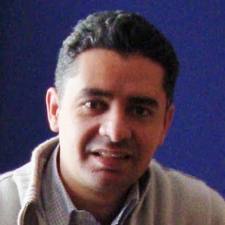
Marwan Zawaydeh is the CTIO of Etisalat, UAE.
Marwan Zawaydeh is the CTIO of Etisalat, UAE. He will be speaking on Day Two of the LTE World summit taking place on the on the 24th-26th June 2013, at the Amsterdam RAI, Netherlands. Ahead of the show we speak to him about the latest developments in LTE in the region and learn more about his views on RCS, roaming and LTE monetisation.
We spoke to you this time last year. How has your LTE network developed since then?
These were very exciting 12 months for Etisalat and for our customers, and we are looking forward to build on this success to continue to lead innovation in the region and provide our customers the latest in technology. We were able to significantly enhance LTE coverage, which has now reached 80 per cent of the populated area. Coverage will be further enhanced further this year as the number of deployed sites will double. We were also able to bring a very rich portfolio of LTE terminals which includes dongles, a Mi-Fi, and popular smartphones from Apple, Samsung, and Blackberry. We were able to secure exclusive deals with these top manufacturers and were able to provide our customers with very attractive packages. This resulted in significant growth of our mobile data traffic as our customers adopted LTE enthusiastically. This has resulted in a significant increase in the ARPU from our mobile customers.
Can you give me examples of a couple of your biggest challenges that you faced?
The first challenge we had was to provide proper coverage to our LTE customers. We started with the 2.6GHz band because it was the only band available at the time. This gave us regional leadership in LTE until enough spectrum in the 1.8GHz band became available. Another big challenge was the fragmentation of the LTE global deployment and the difficulty in bringing a comprehensive LTE eco-system to our customers. We had to expedite the introduction of the 1.8GHz band to be able to provide our customers the best-in-class LTE smart phones and LTE devices.
The LTE World Summit, the premier 4G event for the telecoms industry, is taking place on the 24th-26th June 2013, at the Amsterdam RAI, Netherlands. Click here to download a brochure for the event.
How do you meet the challenge of offering good value to the consumer and at the same time monetising your investments?
This challenge can only be met when investments result in superior customer experience and access to new and innovative products and services. Fortunately, LTE is all about providing our mobile customers much higher throughput, lower latency, and an overall superior customer experience. But this wouldn’t be possible unless we looked at our network end-to-end. Many operators struggle in backhauling LTE traffic and that results in a deteriorated customer experience. Etisalat had a vision several years ago to invest heavily in the fibre network as a converged and future-proof platform. The UAE is currently number one globally in deep fibre deployment because of Etisalat. Our fibre-rich network enabled us to provide GigE connectivity to all our mobile sites to provide an unmatched customer experience. At the same time, continuing to flatten the network architecture helped us enhance the cost effectiveness of our deployment and significantly enhance the overall delivered value to our customers. Applications that enhance the customer experience will help us monetise our investments.
An example of that is eLifeTV, which provides our customers with access to live HD channels and HD video content. We are finding it to be very popular in our market and now we have the platform to enable it we will continue to introduce similar services.
How important is LTE roaming for your customers and what are the challenges in enabling it?
UAE has a unique characteristic of a huge expat population that roam a lot so it is important to facilitate LTE roaming as early as possible, but there are several challenges that still remain.
Current roaming agreements do not provide the required QoS, SLA, and security requirements for enriched LTE services. Etisalat is in the process of deploying an IPX Hub to enhance the roaming capabilities,not only for data traffic, but also for high value voice and rich communication services in the future. Etisalat’s goal is not only to provide roaming to customers in our local market but to become a roaming hub for other operators as well.
What are your plans for RCS-based services and are you excited about them?
We believe enriched services such as RCS are the future and we are actively exploring various options of introducing RCS services as part of our portfolio of innovative products and services. Actually, we already have the required back-end system, which will ensure a fast time to market. We are working with our marketing team to determine the right market-entry strategy for these services in UAE.
Why is the best thing for you about attending the LTE World Summit?
We are always keen on attending the LTE World Summit to share our experience and learn from other leading operators. The telecom industry is very dynamic and mobile technology is evolving fast. Etisalat takes pride in consistently taking a leadership in the MENA region and providing our customers with the most innovative technologies and best in class products and services. Attending the LTE World Summit helps us travel fast through the experience curve via engagement with the top operators and vendors in the industry.



